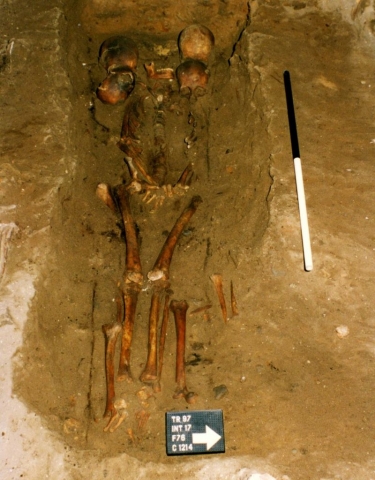Strange ancient 'six headed chief' burial site in Scotland starts to reveal its secrets

Portmahomack (Scottish Gaelic: Port Mo Chalmaig) is a fishing village situated on the Tarbat Peninsula in the north of Scotland. Over many centuries it was part of a strong Pictish community, many traces of which can still be seen in the form of carved stones. There is evidence of much earlier human settlement dating back to the 2nd century BC. The remains of an Iron Age broch can also be found to the west of the village.
Portmahomack was the site of a very early Christian monastery, thought to have been founded by Saint Columba in the late 6th century. The medieval parish church of St Colmóc now stands on the site, the oldest part of which was built as early as the 9th century. It now houses the Tarbat Discovery Centre a museum noted for its wealth of exhibits.
Over the years a great deal of research and investigation has taken place around the church of St Colmóc. A number of graves excavated by archaeologists at the site, including that of one nicknamed the "six-headed chief". The grave contains a man with a fatal sword wound to his skull. He was buried with four skulls before his grave was later reopened to bury a second man, while a third man was buried in a nearby grave.
Archaeologists have now used DNA analysis to uncover more about the centuries old burial site. It has been revealed that all the remains bar one date to the late 13th to early 15th century, a time of warring between rival clans, the exception being those dating to the 8th to 10th century and thought to be that of a Pictish monk. The analysis suggests some of the remains in the grave belong to generations of the same family. The skull of the monk appears to have been taken from the monastic cemetery that existed on the site and it is speculated that is was placed in the grave because it was regarded as a prized holy relic.
Image above: Six-Headed Chief burial site.





